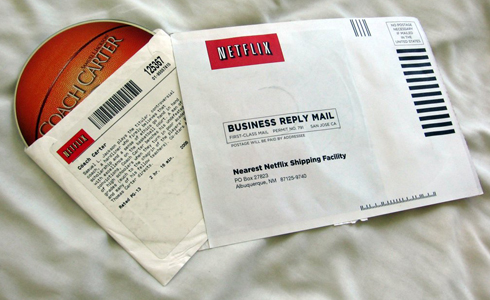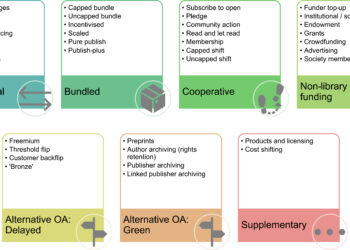
Several years ago I happened to be introduced to Reed Hastings, the founder and CEO of Netflix, at a Little League baseball game. I was already a subscriber to Netflix at that point and got to ask Hastings the question that had been nagging me:
“Don’t you risk losing money if your customers order too many movies?”
This was before Netflix began streaming video to the home; the entire business was in DVDs sent via the US Postal System. The odd thing about Netflix was that a customer got unlimited usage: all the DVDs you can watch for a fixed-price subscription (at that time, around $20/month). I assumed that Netflix had an interest in handling those DVDs by mail as slowly as possible, but the fact was that the mailings were becoming more efficient: mail a DVD on a Tuesday and a replacement DVD would arrive on Thursday. Why did Netflix do so good a job in what was clearly against its economic interests?
Over the course of six innings, Hastings patiently set me right in an absorbing explanation of the real drivers of the Netflix fixed-price subscription model. (While he was doing this, I wasn’t paying attention when my kid made a spectacular catch in right field. I have experienced excruciating parental guilt ever since.) What limits usage, Hastings said, is not how many DVDs a customer has; the limiting factor is how many DVDs anyone can watch in a month. He compared Netflix to a smorgasbord where people eat their fill and no more. What became apparent to me was that although Netflix ostensibly was in the business of renting videos, its real business was in monetizing users’ attention. Netflix can put all that food on the table because it knows that no one person can eat all of it.
It is certain that all the business people in the media industry are studying Netflix; publishers, too. The likelihood of an online subscription model for books seems inevitable, as someone is bound to try to copy Netflix. This has already happened for print books, where BookSwim has copied the Netflix model, but BookSwim, which lacks licenses with the publishers, works only in print, which is inherently limited because of the cost and time involved with shipping books.
How many books can you read in a year? In the consumer market, a fairly big number would be a book each month (the Book-of-the-Month Club knew what it was doing). More earnest readers might read 2-4 books each month; there are reports of readers of genre fiction purhasing several books a week. In academic markets, the numbers would be different — higher on all counts and including many texts that are only sampled. But even the most assiduous professor comes up against the natural barrier of the number of hours in a day. Access is not the problem; attention is the scarce resource.
If someone wanted to knock Amazon off its pedestal, an all-you-can-eat subscription model might be the trick. But who would do this? It would be hard to aggregate all this content in digital form. Right now the contestants would appear to be the troubled Barnes & Noble, Google, Apple (whose collection of titles is disappointing), Kobo (whose position has been undermined by the bankruptcy of Borders, its principal client), and Amazon itself.
Hmmm . . . Google.
Publishers may have an opportunity to participate in the Netflix model themselves, although in a limited way. While it’s possible that the new joint venture Bookish, put together by three of the largest trade publishers, could evolve into a subscription service, another avenue would be for a publisher with a deep list in a particular category to develop its own program, what is known in the industry as a “vertical.” In some consumer categories (e.g., romance) this is already happening. Perhaps CogNet from MIT Press, a subscription-based service for cognitive scientists, is an early version of the evolution of this idea. (I served as an advisor to CogNet, which was principally developed by Terry Ehling and Marney Smith.) I would particularly like to see a consumer-facing all-you-can-eat subscription service for university press books, perhaps organized by discipline. N.B. a consumer-facing service is fundamentally different from a library-facing service in that consumers have limited consumption capacity, but institutions do not.
The obstacles for putting such a service together are enormous and include technology, finance, marketing, and the biggest hurdle of all, clearing the copyrights. But it may be that the biggest obstacle for publishers is psychological. How to price this thing? It’s one thing to price an aggregation for institutions, quite another to play Netflix’s game, with monthly fees so low that it is simply hard for a consumer to say no. Publishers’ minds will naturally be focused on the price of each individual book and will attempt to capture most or all of that price in a subscription plan. Thus there is a certain logic, unanchored in the marketplace, that suggests that 1,000 books with an average cover price of $20 should be priced at $20,000. Oh, let’s apply a 10% discount to that. The numbers look great. The only problem is that there will be no customers.
Publishers need to evolve plans for “attention marketing” and “attention pricing.” Increasingly we will find that we don’t sell books or any other form of content any more. Instead we put a price on the amount of engagement we can foster with a user. What is the price to be the center of attention for an hour a day? Two hours a day?
Let’s work through this idea with a concrete example. (I have previously used this example in a different context.) Consider Penguin Classics, one of the most distinguished series for the intelligent general reader. There are 1,082 titles in Penguin Classics, more than many readers will read in a lifetime. You can buy the complete series on Amazon for the self-declared “low” price of $13,413.30, which implies an average cover price of around $15. I am a reader of Penguin Classics myself. I read perhaps two books from the series every year, at a cost of approximately $30. On that $30 Penguin makes a gross profit of perhaps $7.50, perhaps a bit less after royalties are taken into account. (Retailers get about half of the $30.) I read more than two books a year, of course, but Penguin has to compete with many other claims on my attention, whether that comes from other publishers, film, music, or any other way I might spend my discretionary time.
If Penguin is going to become an “attention marketer,” it will quickly realize that the biggest opportunity is to convert the $7.50 it earns from me into a bigger number. Let’s propose that Penguin now makes its entire Classics series available directly to individuals in electronic form for a subscription of $50 a year. The first reaction by a publisher to a suggestion like this is, “We can’t give all those books away for that price!” But of course you are only “giving away” what a reader has the time to consume. Such a strategy would increase Penguin’s profit on me by almost 700%. And as a subscription product, the service may continue to collect that money for many years.
I would sign up for such a subscription from Penguin in a minute. As a subscriber I would quickly see that every book I read is “free,” that is, it has no marginal cost to me beyond the fixed cost of the subscription. This will provide an incentive for me to read more Penguin Classics — Penguin is now beginning to monopolize my attention. If any of this sounds bizarre, reflect for a moment on how your subscriptions to cable television and Netflix work. Since I became a Netflix subscriber, the number of movies I watch has skyrocketed. Netflix offers me far more movies than I could ever watch, and all for one fixed price. As a consequence of my Netflix subscription, I use my television set less and less as a television and increasingly as a display monitor for Netflix.
For Penguin or any other publisher to do this, it will need to hone its direct-marketing skills, and it will need to have the technology to deliver the works in digital form, preferably in a way that does not encourage piracy. It is thus likely that the proprietary systems of Amazon, Apple, etc., will soon be competing with service providers that create subscription-based applications for publishers, just as we now have in the library market for journals, where the likes of HighWire, Atypon, SilverChair, and AIP compete for clients.
Learning from Netflix doesn’t mean stopping there. Netflix is an aggregation of movies and TV shows. A publisher might start with an equivalent, but over time the various elements in the aggregation will begin to “talk” to one another. Books that were written as stand-alone entities will begin to reference other books and be referenced by them. Reader commentary will knit the collection closer and closer together. At some unknown future point it will be hard to say where one book ends and another begins. The evolving subscription is thus just one step in the ongoing evolution of books and how they are published.
Discussion
11 Thoughts on "What’s for Sale? Moving from Selling Content to Monetizing Attention"
Excellent piece. I’ve read a lot of people suggesting ‘Netflix for books’ but you added original thinking to it.
The Penguin classics idea is brilliant.
Great post!
As a genre reader, if a fantasy book subscription were available, I’d sign up in a minute. It would give me broader access to titles and authors than my public library and allow me to re-read without guilt.
The kind of review and referral services NetFlix offers would improve users’ experience of products like CogNet.
I wonder if Project Muse, or JSTOR, or Oxford Online, which are all rolling out aggregations of scholarly books to sell to libraries via subscription could extend the service to individuals on your Netflix model? This is a very intriguing idea, which deserves further exploration by university presses.
A Netflix approach also allows (and requires) publishers to focus more clearly on using context to promote discovery, access and trial. It will also help is compete by providing readers with tools that draw upon context to help them manage abundance.
Joe, you might mention O’Reilly’s Safari subscription product, which makes an even more consumer-friendly offer than you describe above: access to all their titles in digital format for a single month. There’s a lot of precedent as well in the world of professional publishing–in legal publishing, LexisNexis, Thompson Reuters (West), and Wolters Kluwer aggregate thousands of titles and sell online subscriptions. It’s been an extremely lucrative model.
Safari Books Online already offers a subscription service for tech and business books, priced for individuals, small groups (2-25 people), or large enterprises. It’s a very smart vertical offering, with content from multiple publishers. Customers can choose to get X books/month or unlimited, with a range of content options: print or digital, whole books or parts, training videos. It’s a joint venture of O’Reilly and Pearson, so presumably there is both smart technology and big bucks behind this.
I can imagine this model working for academic subjects/verticals.
But some caveats: Are MUSE, Jstor, OUP, et al. are positioned to offer good service to individual customers? I’d expect service to be a critical factor in success.
Another challenge: many readers of scholarly books are faculty or students. If MUSE, et al., manage to offer UP content across a wide swath of the academic library market, why would individual customers need subscriptions? How would an individual-person subscription offering for books differ from what they get at the library? How would pubs cluster content to appeal to individuals?
Sorry I joined this conversation so late. One big difference between Netflix and the “Penguin Proposal” is that movies do no start out at Netflix (in general). They are first (typically) released to theaters, and then they move to pay-per-view and then to Netflix. The studios are able to make money well before Netflix finally enters the scene.
Does this kill the “Penguin Proposal”? Certainly not, but it is another aspect to consider.
Is this perhaps the first step toward what you’ve proposed for Penguin Classics?
http://us.penguingroup.com/static/pages/features/amplified_editions/penguin_classics_app.html



